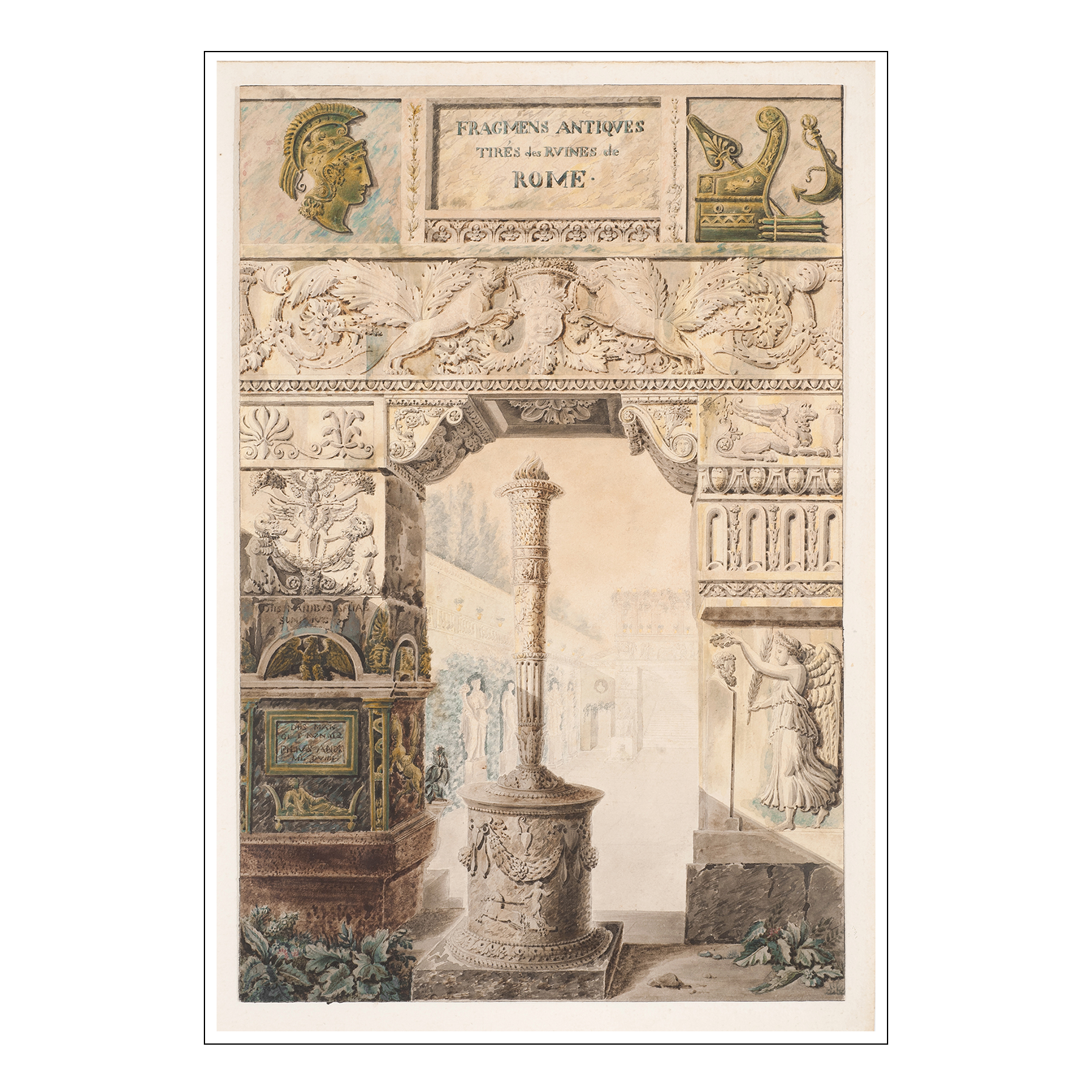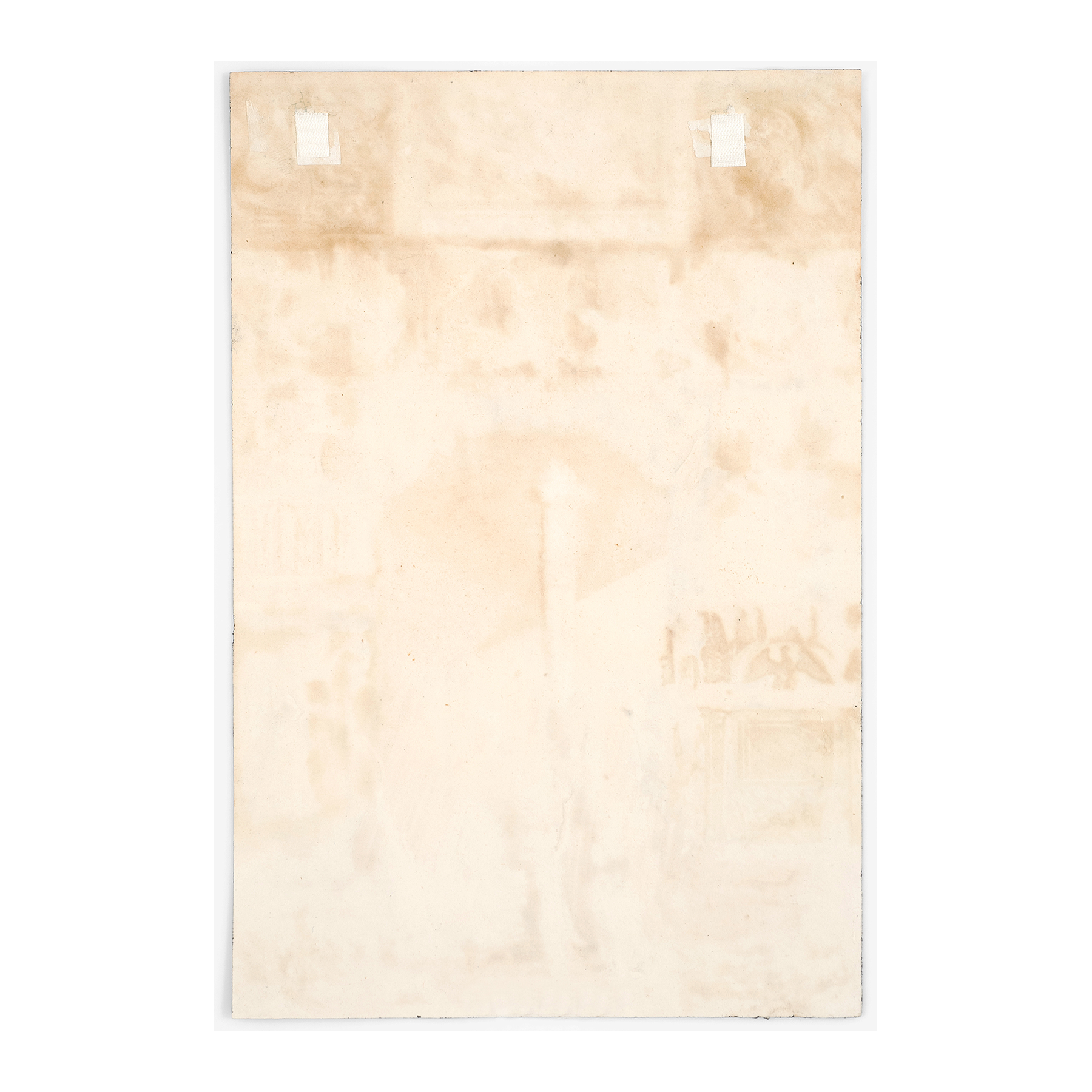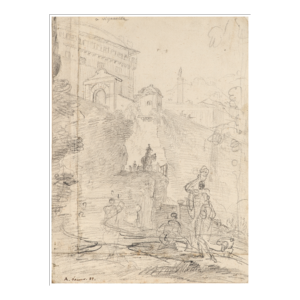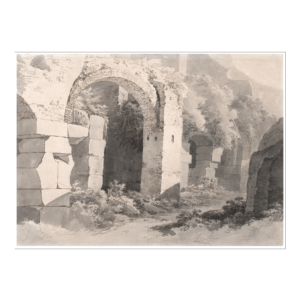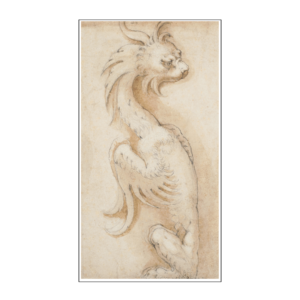Charles Percier
Paris 1764 – 1838
Antique vestiges from the ruins of Rome
Inscribed FRAGMENS ANTIQVES / TIRÉS des RVINES de / ROME at the top.
Black chalk, pen and watercolor.
240 x 160 mm – 9 7/16 x 6 5/16 in.
Provenance – London, Sotheby’s, 26 April 1990, n° 388; London, Christie’s, 4 june 2008, n° 338; private collection.
Bibliographie – Inside Out: Historic Watercolour Drawings, Oil Sketches and Paintings of Interiors and Exteriors 1770-1870, Charles Plante Fine Art, London, 2000, n° 11.
A student of the Académie Royale d’Architecture, Charles Percier won the Prix de Rome in 1786. On his way to Rome, he never ceased to draw the most beautiful monuments in France and Italy, and he finally joined his future collaborator Pierre-François Fontaine in the Palazzo Mancini where the Académie de France à Rome was settled. Together, they studied and drew the ancient vestiges but were also strongly attracted by the magnificent buildings erected by popes and princes during the 15th century.
This drawing is the project for the frontispiece of the 11thvolume of Charles Percier and Pierre-François Fontaine’s Palais, maisons et autres édifices modernes dessinés à Rome, [Palazzi, houses, and other modern buildings drawn in Rome] composed of 16 books with 100 plates, printed in Paris by the Imprimerie Baudouin in 1798, year VI of French Republic (p. 117, plate 62). In the chapter Explication des planches contenues dans cet ouvrage [Explanation of the plates in this volume], the frontispiece of the 11thbook is described as follows (p. 35): « Frises, autels, candélabres, cinéraires et autres antiquités tirées de divers endroits. La frise dans laquelle on voit une corbeille de raisin entre deux tigres, est à Tivoli ; l’autel circulaire et le candélabre sont dans les jardins du collège de l’Apollinaire, près de la place Navona ». [Friezes, altars, candelabra, funeral urns and other ancient vestiges found in different places. The frieze in which one can see a basket full of grapes between two tigers is in Tivoli; the circular altar and candelabra are in the gardens of Apollinarius, near piazza Navona.]
The inscription on the pediment of the triumphal arch FRAGMENS ANTIQVES/TIRÉS des RVINES de/ROME was replaced in the print by PALAIS ET MAISONS DE ROME XIE CAHIER. His pen line is delicate and precise, while the watercolor beautifully underlines the shape and volume of decorative elements. Percier was less interested in perspective than in delineation and skillfulness of the pen line. His controlled outline combined with his passion for lavish ornaments best define his creative work.
Back in Paris, Percier and Fontaine exercised through their publications a significant influence on the evolution of architecture and the development of the Empire style. A drawing in the Musée de la Céramique in Sèvres (inv. 2012.1.1291.1) shows a frieze after après Charles Percier using one of the patterns of the right side of the triumphal arch.
Condition report – Excellent condition. Framed.
